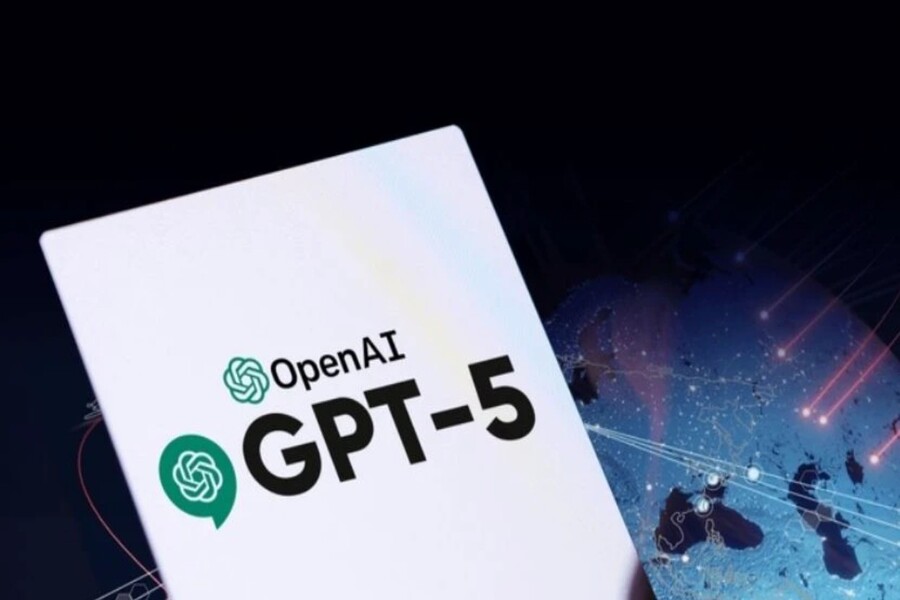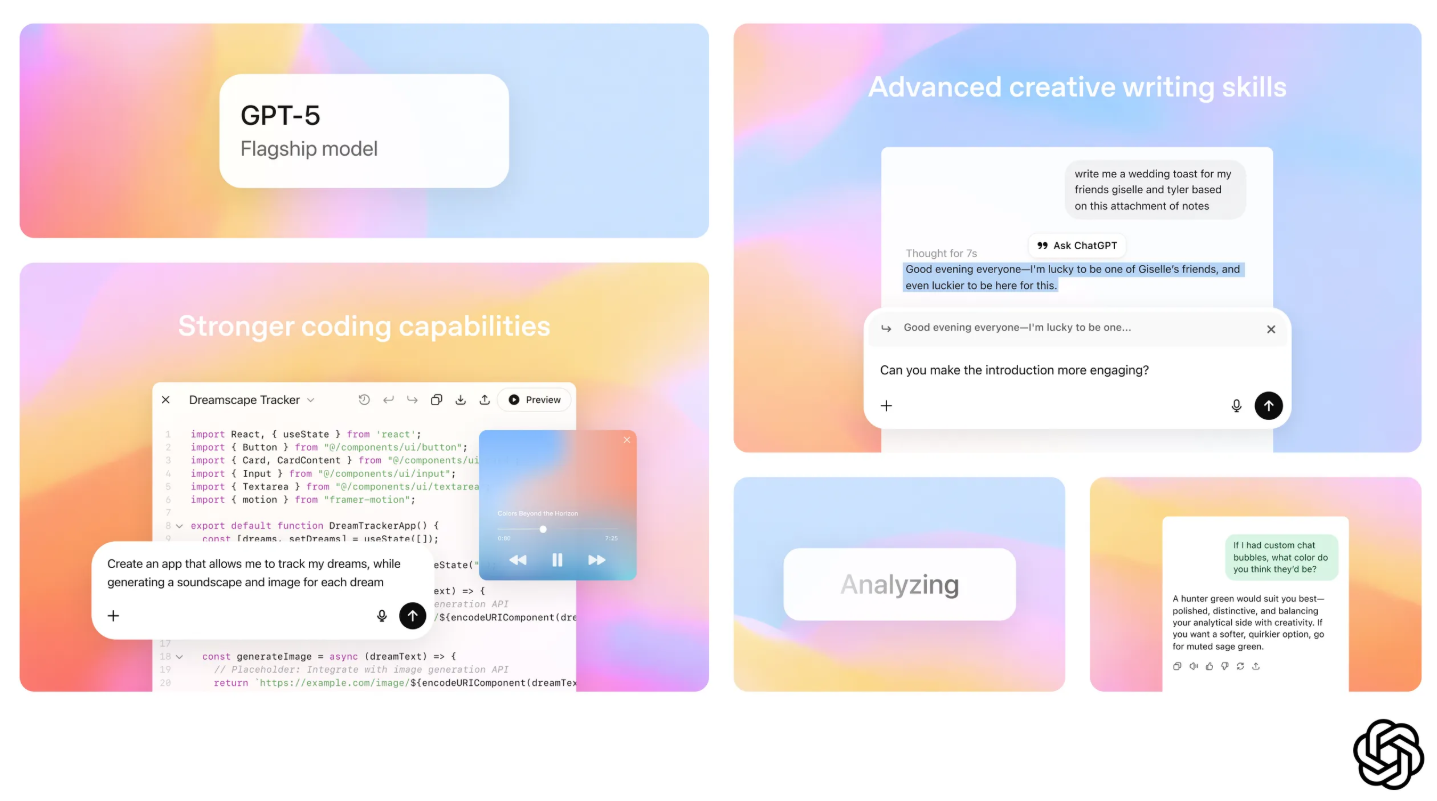Best Selling Products
GPT-5 Consumes 8.6 Times More Power Than GPT-4, What's Going On?
Nội dung
A new study from the AI lab at the University of Rhode Island (USA) has come up with a shocking number: GPT-5 consumes 8.6 times more power than GPT-4.

In recent years, artificial intelligence has exploded at an unprecedented rate. From GPT-3.5 to GPT-4, and now GPT-5, the ability to understand language, generate text, process information, and even create content has reached levels that have amazed both the tech world and ordinary users. But along with this impressiveness, a question has begun to be asked more and more: what is the real price of AI?
According to The Guardian, a new study from the AI lab at the University of Rhode Island (USA) has come up with a shocking number: GPT-5 consumes 8.6 times more electricity than GPT-4. And if you look deeper into the calculations, the amount of electricity that GPT-5 consumes daily can be equivalent to the capacity of two to three nuclear reactors. These numbers are not only shocking in terms of technology but also open up a broader debate about environmental impact, pressure on energy infrastructure and future AI development strategies.
1. GPT-5 Power Consumption Figures
According to estimates from a team at the University of Rhode Island, GPT-5 consumes an average of 18.35 Wh per query. This figure, when viewed alone, may not seem like much, equivalent to charging a smartphone by about 30–40%. However, when multiplied by the 2.5 billion requests that ChatGPT receives each day, the total power consumption reaches 45 GWh/day.
To put that into perspective, 45 GWh is equivalent to the amount of electricity consumed by a small country like Liechtenstein or the Seychelles over several days. It is also comparable to the power of 2–3 nuclear reactors operating continuously, each generating around 1–1.6 GW of electricity per hour. This is a level of consumption that even supercomputers dedicated to climate simulations or nuclear research rarely reached in the past.

Compared to the previous generation, the difference is huge: GPT-4 only consumed about 2.12 Wh per query, meaning GPT-5 was 8.6 times more power hungry. In tests, a response of about 1,000 tokens from GPT-5 could consume up to 40 Wh, the equivalent of running a 40W incandescent bulb for an hour just to generate a reply.
This puts GPT-5 in the top tier of the most energy-intensive AI models ever tested, surpassed only by some less popular and ultra-high-end models like OpenAI's o3 or Deepseek's R1. In terms of scale, GPT-5 represents not just a leap in language processing capabilities, but also a huge leap in the amount of electricity required to keep it running.
2. Why GPT-5 consumes more power than GPT-4
GPT-5's massive power consumption is not the result of a single factor, but rather a combination of technical, model architecture, and operational infrastructure reasons.
First: Superior Model Scale
GPT-5 is said to have a much higher number of parameters than GPT-4. Each of these parameters needs to be processed, stored, and retrieved when the model is running. As the number of parameters increases to tens or hundreds of billions, the number of matrix multiplications and tensor operations also increases accordingly. This causes the power consumption for each query to increase exponentially.
Second: Processing performance and low latency
GPT-5 is optimized to create faster and smoother responses, reducing user waiting time. To do this, the model must run in parallel on multiple GPUs at the same time, maintaining high clock speeds and continuously transmitting data with extremely large bandwidth. This process causes the GPU system to be in a state of full load throughout the processing time, increasing power consumption.
Third: Massive Support Infrastructure
GPT-5’s operations don’t just depend on GPUs. Multi-core CPUs, high-speed RAM, NVMe SSDs, 40–400 Gbps network systems, and a host of switches, routers, firewalls, etc. all require electricity to operate. In addition, data centers hosting GPT-5 must be equipped with industrial cooling systems, including high-power fans, water pumps, or liquid cooling systems, which are not small “power consumers.”
Fourth: Power Usage Effectiveness (PUE)
Even in modern data centers, PUE (Power Usage Effectiveness) is typically in the range of 1.1–1.3, meaning that for every 1 kWh of power supplied to the server, 0.1–0.3 kWh is used for cooling and auxiliary operations. At the scale of GPT-5, even this optimal PUE level adds up to a huge number, especially when the system is running millions of GPUs at the same time.

All of these factors combined make GPT-5 a huge “power hog,” reflecting the real energy cost behind every time we type a question into ChatGPT.
3. Accuracy of estimates
While the numbers from the University of Rhode Island study are interesting, it's important to emphasize that these are just estimates, not official numbers from OpenAI.
The testing method is based on measuring the response time of GPT-5 and estimating the power consumption of the assumed hardware. The team assumed that GPT-5 was running on Nvidia DGX H100 or DGX H200 systems on the Microsoft Azure platform. However, if OpenAI has started deploying newer generation hardware such as Nvidia Blackwell, the measurement results could be significantly different, and the consumption could be even lower due to higher power efficiency or higher if the configuration is maxed out for response speed.
In addition, the team added in components beyond the GPU, such as the CPU, memory, storage, and cooling system. They also applied PUE and Carbon Intensity Factor (CIF) to predict CO₂ emissions. However, due to the lack of internal data from OpenAI and Azure, many of the assumptions are still based on computational modeling and cannot be absolutely confirmed.
This means that while everyone agrees that GPT-5 is a power hog, the exact number is unknown. It could be slightly lower if the hardware infrastructure is optimized, or much higher if the actual query volume and hardware configuration exceed the initial assumptions. Until OpenAI releases real numbers, the question of GPT-5’s true power consumption will remain one of the biggest mysteries in the AI industry today.

4. Environmental impact
When it comes to the environmental impact of AI, electricity consumption is only half the story. The other half is the greenhouse gas emissions that come from generating the electricity.
If GPT-5’s electricity consumption reaches 45 GWh/day, and if most of this electricity comes from fossil fuels (coal, gas), the CO₂ emissions will be huge. In many countries, producing 1 kWh of electricity from coal can generate more than 0.9 kg of CO₂. Multiply that by tens of millions of kWh, and we’re talking about tens of thousands of tons of CO₂ per day.
In addition, this huge demand for electricity is also putting pressure on the national energy infrastructure. In the US, where most AI data centers are located, many states have begun warning of the risk of power shortages, especially in the summer when demand increases due to air conditioning.
The rapid growth of AI data centers also raises questions about sustainability. Can we continue to expand AI without creating an energy and environmental crisis?
5. Perspective from the technology industry
From a technical perspective, GPT-5 is a remarkable achievement. Its language processing, logical thinking, content creation, and even multi-step reasoning capabilities far surpass GPT-4. This has led many experts to view GPT-5 as a stepping stone towards AGI (Artificial General Intelligence).
However, the “price” of achieving that intelligence is huge energy consumption. This poses a difficult problem for AI companies: how to maintain high performance while reducing operating costs and environmental impact.

Some of the directions being considered include:
-
Use more energy-efficient hardware (e.g. custom AI chips).
-
Optimize the algorithm to reduce the number of calculations required for each query.
-
Leveraging renewable energy for data centers.
-
Distribute processing to the user device (on-device AI) to reduce server load.
6. Will GPT-6 consume less or more electricity in the future?
If history repeats itself, each new generation of AI tends to be more powerful and… more power hungry. However, no one wants to see GPT-6 consume twice as much as GPT-5.
Energy savings will depend on three main factors: hardware advances (higher-performance GPUs that consume less power), model improvements (fewer calculations but more intelligence), and operational strategies (more renewable energy).
Some experts are optimistic that with the advent of Nvidia Blackwell and custom AI chips from major vendors, energy consumption per query could drop significantly, even as the model continues to scale.
7. Conclusion
GPT-5 is the clearest example of how AI power doesn’t come for free. Every answer you get from GPT-5 costs not only data bandwidth but also a fraction of tens of gigawatt hours of electricity per day.
The question here is not “whether to develop AI or not” but “how to develop AI sustainably”. If the technology industry does not find a way to reduce its environmental impact, the benefits of AI may be overshadowed by the energy costs and emissions it creates.
The AI race is now not just a race of artificial intelligence, but also a race of artificial energy efficiency. Whoever solves this problem will have the real advantage in the AI era.












































